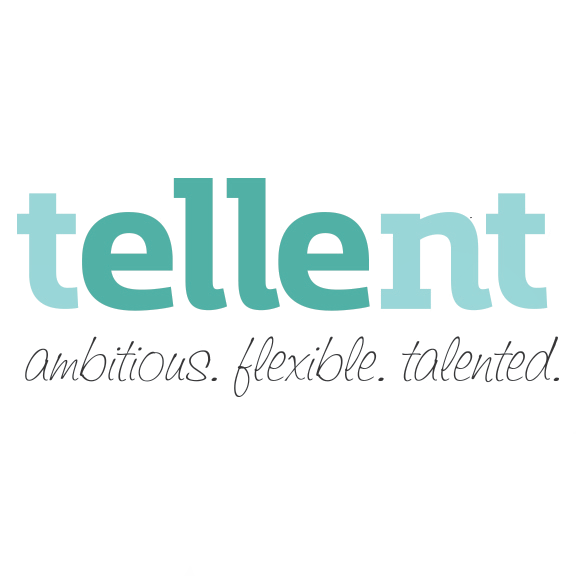PROFILES in businesshealth® – tellent


Jennifer Hargreave, Founder and CEO, tellent
bh IN BRIEF
tellent partners with employers to build more flexible and equitable workplaces in order to attract and retain talent in the new work economy. We offer a job board and resources for professional women to pursue their career and life ambitions. We are committed to making work, work better for women.

www.wearetellent.com
Companies that recognize the importance of flexibility rise to the challenge of keeping valued employees in the workforce, especially women whose careers are interrupted by family responsibilities. Such employers put women on track for leadership and maintain them in leadership roles throughout uncertain times. In the end, they are rewarded with a capable, loyal workforce that brings strength and diversity to their organization.
But, how do they find each other? Is there a way for employers who want to offer flexible work opportunities to find employees who need flexible options? One answer is tellent, a company that was founded to bring together people who want more flexible, equitable workplaces. To find out more, bh asked tellent’s founder and CEO, Jennifer Hargreaves to discuss flexibility, especially in relation to women in today’s workplace.
Why did you establish tellent?
I wanted to build my career and grow professionally and be present as a parent, but I had no way to discover which companies had a culture of flexible work that I believed could allow me to do both well.
At the same time, I was seeing too many of my peers exit the workforce or downgrade their career aspirations due to the rigidity of the traditional structure of work. I fiercely believed (and still do) that the companies who do think differently about job design and flexibility could benefit from accessing this pool of talent.
So, I set out to create a place where I could connect all women – not just mothers – with career opportunities that would use the education, experience and professional ambition that they had to offer and would let companies not only enhance their gender diversity initiatives but also access talent in a more affordable way.
What do you know about the needs of professional women in Canada?
Understanding the ambitions and shifting values of women in the workplace, especially their future female leaders is a major challenge for employers, particularly when women fear the impact that speaking up with honesty could have on their careers, even in an exit interview.
tellent is in a unique position to know what professional women want because we ask them, and they tell us. In 2019 we conducted a survey of more than 500 professional women in the Greater Toronto and Hamilton areas to find out how work can work better for them. Our objective was to better understand the barriers to staying engaged in, or aspiring to, leadership in Canada from a woman’s perspective.
They told us the top three things that experienced professional women look for in an employer are:
- A culture of flexibility and work life balance
- Fair compensation
- Opportunity for career progression and growth
However, there is a significant gap between what women want with regards to flexibility and what they currently have access to. If they cannot find flexibility within their current work environment, women say they may:
- Leave and take a career break
- Transition into a different (and less demanding) career with less pay
- Leave their current work environment to start their own ventures
At the same time, women who stay can face overt and systemic barriers preventing them from holding high value, high paid roles in leadership. 45% of the working mothers we surveyed felt that they had been discriminated against because they were parents.
What are the advantages of flexibility?
The increased trust and autonomy that come with a culture of flexible work result in happier, more loyal and productive employees and significant costs savings for employers. Over the last couple of years, I have seen a shift in flexible work options. No longer a perk or “nice to have” they have become base line or a deal breaker, especially for experienced women.
Advantages of flex work include, but are not limited to:
Productivity – Employees work best when they control in where and how they work. Some people work better first thing in the morning and some in the evening. Some people like the quiet of home, some like the bustle of an office or coffee shop. Furthermore, if they are cutting out a commute, they have additional time to work or be productive across other areas of their lives.
Reduced stress and lower absenteeism– Our survey told us that among the biggest complaints in the workforce were stress, mental health and burn out. Flexible work schedules allow employees the ability to deal with all of life’s demands more effectively and with less stress. Less stress allows for more productive, healthier and happier employees.
Cost savings – There are significant cost savings to employing flexible work options including savings from the elimination of overhead associated with maintaining a physical workspace and from experiencing lower absenteeism and turnover. Retention is often cited as one of the primary drivers for implementing flexible work arrangements. In addition to reducing turnover costs, it strengthens loyalty and employee commitment.
Part-time option – Access to flexible talent means that instead of hiring someone full-time, employers can hire someone part-time. For example, SMEs that can’t afford or don’t need someone full-time can hire a woman who is happy to work two or three days a week.
Access to a wider pool of talent (beyond your postcode). Skilled talent shortages continue to present a business risk in Canada. Employers who limit their talent search to a city radius or to workers who can, or want to be, at a desk between the hours of 9am – 5pm, will not have access to as wide as talent pool as those who look beyond their immediate area. The tools exist now to facilitate a completely remote workforce. Companies that do so, will have access to talent across the whole country, or world.
A competitive advantage in recruiting diverse candidates. – A culture of flexible work and work life balance are the number one things experienced professional women are looking for from their employer. Candidates are not even going to consider employers without such a culture.
What do employers need to understand about flexibility?
Flexibility is no longer a perk or nice to have but essential for attracting the best talent, and not just women.
Flexible work as an accommodation for women versus a company-wide culture of work is not a solution. It increases bias and discrimination in the workforce. Flexible work policies need to be made available to all and used by all.
Work not getting done is an issue of performance, not flexible work options. If you think your employees won’t get their work done with flexible work options, they likely aren’t doing the job without them either.
This is the future of work. If you don’t adapt, you will be left behind and struggling to find the skilled talent that you need in order to be competitive in the fourth industrial revolution.
How can employers increase flexibility?
Stop assuming, start asking. What do your employees actually want and need with regards to flexible work options?
Flexible work for everyone, not just mothers. A culture of flexible work, or a results- only work environment (ROWE), will enable more women to meet their responsibilities of care and work without bias and discrimination.
Encourage men to take parental leave. If both parents are trained to be working parents, the burden of care will not sit solely with the mother. Imagine doing a job for a year (or 18 months) and then having to train your partner to do that job as well as you. Starting the handover earlier in the process endures both parents a more equal opportunity to manage work and care responsibilities jointly and effectively.
Trust your employees. You shouldn’t have to see your employees in the office to trust them. You hired them for a reason. If they aren’t getting the work done that is a conversation about performance, not flexibility.
Lead with flexibility in your job advertisements. If you have a culture of flexibility or the role offers flexibility, lead with it, or highlight it, in your job advertisement to attract more talent.
Start with a pilot. Implement a trial within a division or business unit at your organization. See what works well and identify where you need to implement more structure or process with your technology infrastructure, management practices or systems before rolling it out across the rest of the organization.
Build leadership for flexibility within your organization. In order for a flexible work culture to develop, leaders must model the behaviour they wish to see within their own organization. This includes using the flexible work options in your policy and empowering, and training, your managers to adopt workstyles with their teams that will deliver results.
The takeaway for employers
A flexible work culture is essential in today’s changing employment environment. Adapting poses challenges for employers. At the same time, increased flexibility offers the prospect of cost savings, access to a wider talent pool, especially for SMEs, and a happier, more productive workforce. Organizations such as tellent and testimonials from people who have experienced flexibility can help with guidance for attracting and retaining employees well into the future and for nurturing the business leaders of tomorrow. bh

